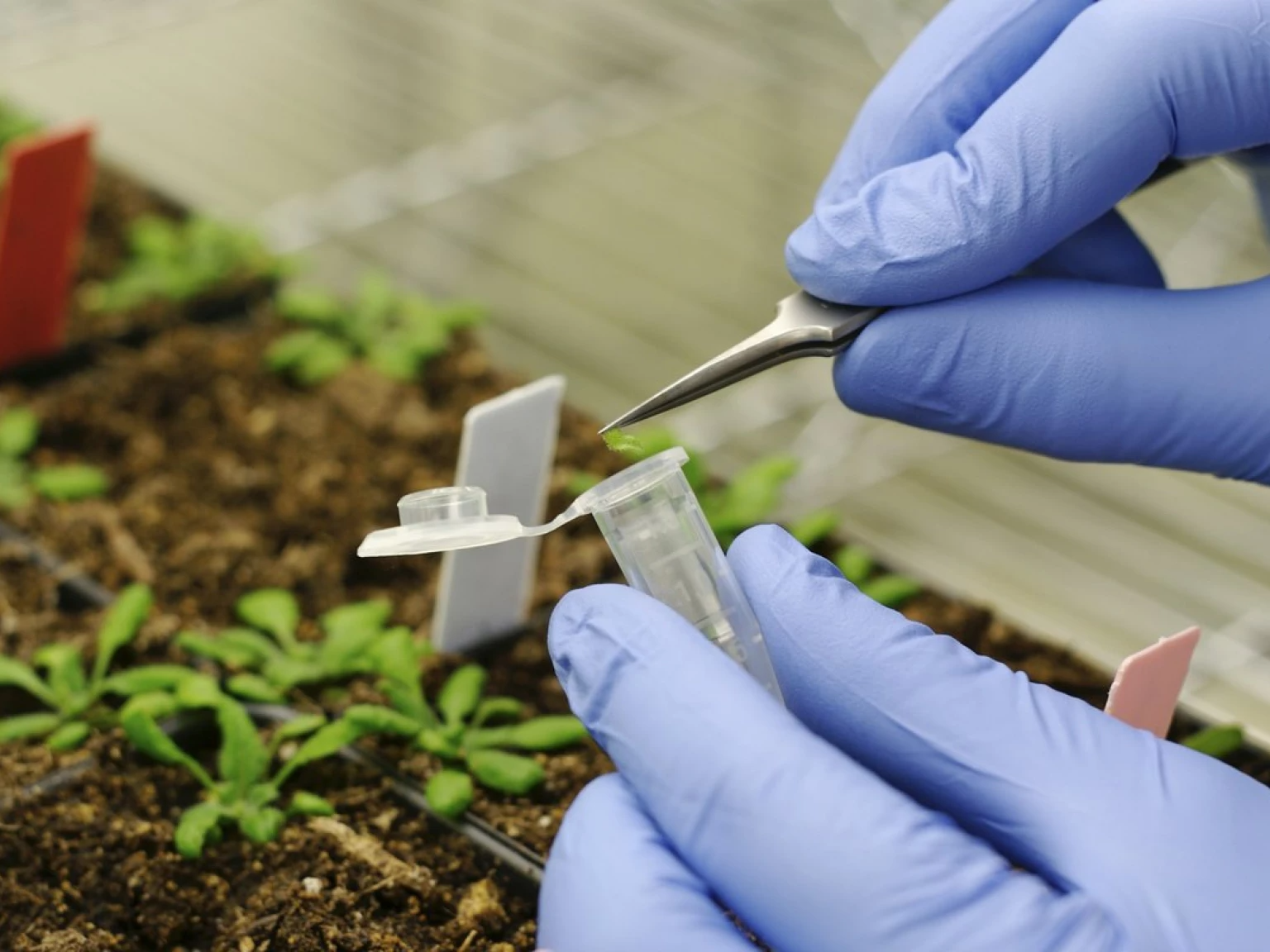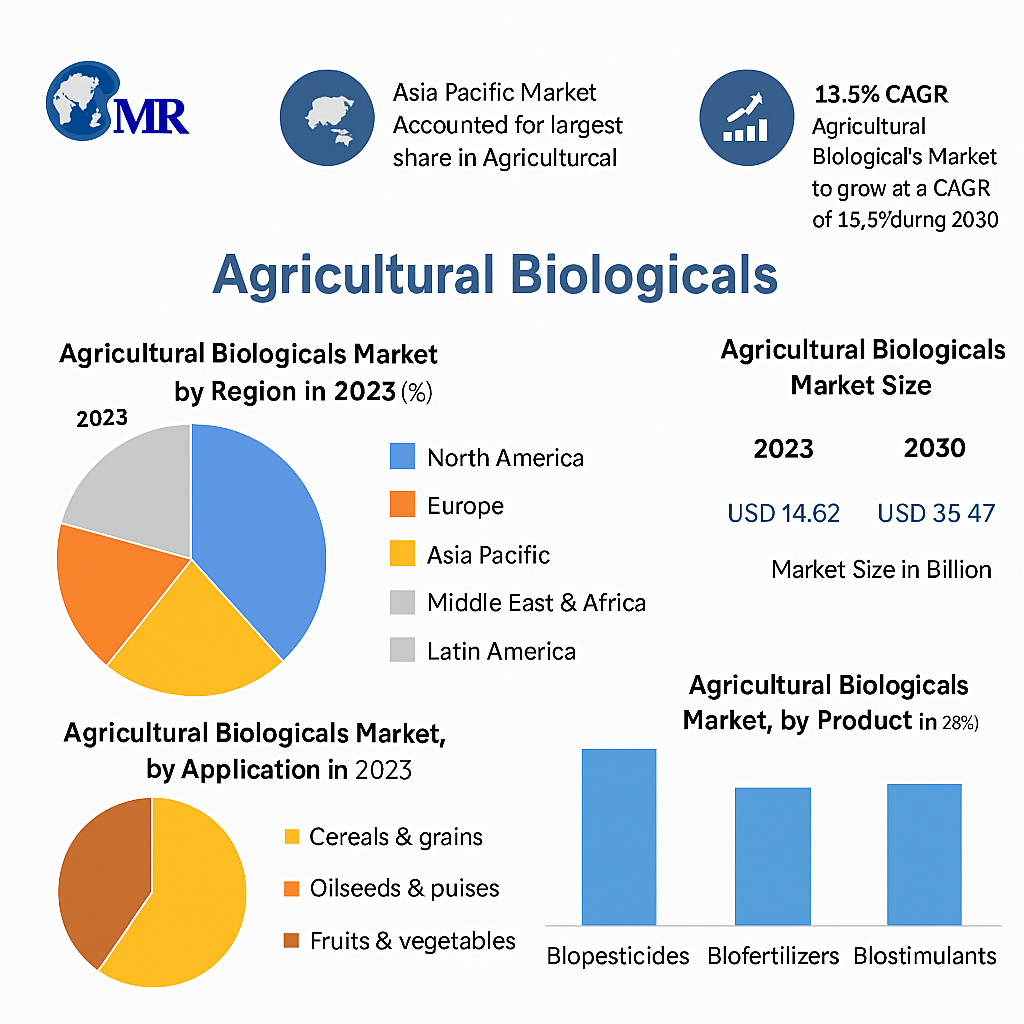Agricultural Biotechnology Market Estimated at USD 130.24 Billion in 2024; Fueled by Rising GM Crops and Sustainability Concerns
The Market is estimated at USD 130.24 billion in 2024 and is projected to grow at a CAGR of 7.7% through 2032 to reach approximately USD 235.76 billion. This growth is being driven by a surge in genetically modified (GM) crops—offering higher yield, pest resistance, and climate resilience—and accelerating global demand for sustainable agriculture solutions.
Market Growth Drivers & Opportunities
-
Genetically Modified Crop Adoption: GM crops such as soybean, corn, canola, and cotton have become staples worldwide, with more than 2.14 billion hectares cultivated (ISAAA). These crops deliver enhanced nutrition, pest resistance, and resilience against environmental stress.
-
Climate Adaptation Needs: With climate change intensifying droughts, floods, and extreme temperatures, biotech innovations—like drought-tolerant maize and flood-resilient rice—are increasingly vital for food security.
-
Environmental & Efficiency Benefits: Traits such as herbicide tolerance and Bt-based pest resistance have led to reduced chemical use, conservation tillage practices, and lowered greenhouse gas emissions.
Opportunities ahead include:
-
Scaling novel breeding technologies such as CRISPR-based gene editing and new breeding techniques to fast-track trait development.
-
Expanding biotech solutions in emerging markets—particularly in Asia-Pacific, Latin America, and Africa—where crop yields remain low and population growth is high.
-
Leveraging biotech for biofuel feedstocks and microbial advancements in nutrient-rich biofertilizers and vaccines.
Segmentation Analysis
From the sourced report:
By Organism
Biotechnology is employed across Plants, Animals, and Microbes—with each sub-divided into Conventional Techniques, Established Genetic Modification, and New Breeding Techniques. The Plant category leads the market, driven by genomic modifications via conventional breeding, GM methods, and cutting-edge breeding technologies. Genetic engineering facilitates cross-species gene transfer to boost yield, pest resistance, nutritional quality, and climate resilience.
By Application
Market applications include:
-
Vaccine Development: Deploying biotech platforms to generate plant- or animal-derived vaccines.
-
Transgenic Crops & Animals: Including nutrient-enhanced or growth-optimized organisms.
-
Antibiotic Development: Via microbial routes.
-
Nutritional Supplements: Enrichment of food products with essential vitamins or oils.
-
Flower Culturing: Engineered ornamentals with improved traits.
-
Biofuels: Biotech-enhanced biomass for sustainable fuels.
The leading application is Transgenic Crops & Animals, widely used for boosting nutrient profiles, reducing pesticide use, improving food security, and enabling medical applications in livestock.
By Region
-
North America: Dominates with a 37.7% share, due to extensive GM crop plantings (especially in the U.S.) and high investment in agri-biotech.
-
Europe, Asia‑Pacific, South America, and Middle East & Africa round out the landscape. Asia-Pacific stands out with rapid biotech adoption, especially in rice and other staple crops. China and India alone account for vast percentages of regional crop area.
Get a Sample PDF Brochure: https://www.maximizemarketresearch.com/request-sample/117190/
Country‑Level Analysis
United States
The U.S. leads global adoption: around half of the world’s GM crop acreage is in the U.S., featuring high-value crops like corn, soybean, and cotton. US-based biotech firms (e.g., Corteva, Bayer) heavily invest in advanced genetic tools and novel seed varieties.
Germany
As Europe’s biotech hub, Germany has tight regulations but ranks high in innovation—particularly in plant tissue culture, protoplast fusion, and advanced breeding. German firms play critical roles in EU-wide GM crop authorization and biotech research.
China
China is massively scaling biotech for staple crops such as rice and corn. The nation has stepped up gene-edited drought- and pest-resistant varieties, alongside microbial biotech solutions for fertilizer and soil health. Policies now support genetically edited crops, accelerating approval timelines.
India
India invests heavily in biotech to meet food security goals. Adoption of Bt cotton (though facing some pest challenges), biofortified rice and wheat, and microbial biofertilizers offers alternatives to chemical inputs.
Brazil
Brazil ranks second globally after the U.S. in GM crop acreage, especially soybean and maize. Public–private initiatives are fostering drought-tolerant, pest-resistant crop varieties, critical for supporting convex agricultural growth.
Australia
Australia leverages biotech in horticulture and high-value crops. Research focuses include gene-edited fruits and nuts, disease-resistant wheat, and biotech-based animal vaccine platforms that align with stringent safety protocols.
Competitor Analysis
The report lists 13 key players. Below is a breakdown of the top five by market influence, along with recent strategic developments:
-
Bayer AG: A global agrochemical and seed powerhouse. In 2024–25, Bayer launched climate-resilient corn hybrids and expanded its digital farming services (e.g., FieldView), enhancing precision agriculture.
-
Corteva, Inc.: Spun off from DowDuPont, Corteva delivers high-performing seeds and trait technologies. It recently unveiled glyphosate-tolerant canola with improved oil profiles and partnered with startup AgriGene to advance CRISPR innovation across Indian staple crops.
-
KWS SAAT SE & Co. KGaA: German seed-game leader specializing in corn and beets. Recently introduced hybrid corn lines in Brazil featuring enhanced pest resistance and yield potential—demonstrating global field innovation.
-
ChemChina (Syngenta): Syngenta, through ChemChina, continues to deploy pest-resistant GM maize and rice hybrids in China and Africa. Its recent partnership with Evogene leverages AI to accelerate gene editing pipelines in soy and cotton.
-
Limagrain: This French agricultural cooperative focuses on seeds and biotech. Its latest launches include nitrogen-fixing wheat varieties and high-yield canola developed via new breeding techniques.
Other significant players include Nufarm, Marrone Bio Innovations, Performance Plants, ADAMA, Mitsui, Evogene, Valent BioSciences, and more. Across the board, companies are deploying strategies such as gene editing (CRISPR), microbial inoculants, seed trait stacking, and digital agriculture.
Strategic Developments (since April 2024)
-
Gene editing acceleration: Corteva and Syngenta finalized regulatory trials for CRISPR-based drought-resistant soy.
-
M&A activity: Bayer acquired small biotech platform AgriGenomics to bolster its microbiome and biofertilizer capacities.
-
Collaborations: Evogene partnered with Nufarm to co-develop microbial seed treatments targeting soil health and nutrient efficiency.
Conclusion
The Market is experiencing robust expansion—driven by the urgent need for sustainable agriculture, escalating GM crop adoption, and surging investment in cutting-edge breeding techniques. With key players like Bayer, Corteva, KWS, ChemChina, and Limagrain leading innovation in traits, digital agriculture and microbial solutions, the sector is poised for transformational growth. Regionally, North America and Asia-Pacific are spearheading adoption, while markets like Brazil, India, and Europe bolster momentum through supportive policies and research. The synergy of genome editing, microbial biotech, and data-driven farming promises a resilient, high-yield, and sustainable future in agriculture—one ready to meet global food security and climate change challenges head-on.



